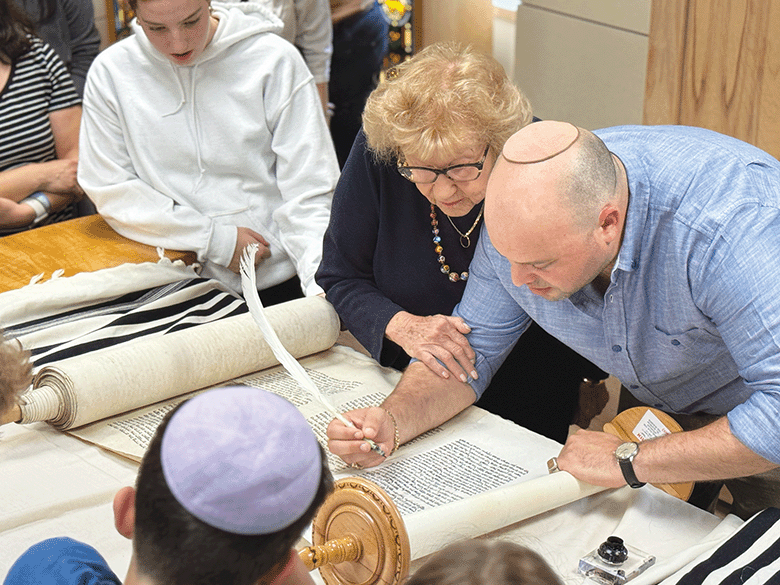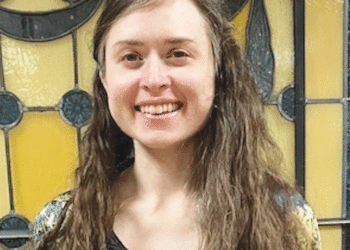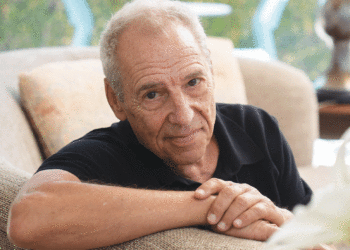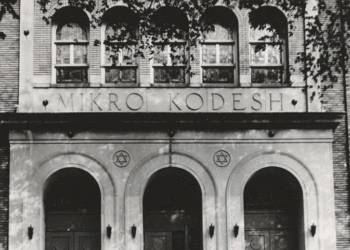By ELANA WARREN / Assistant Editor
The Minneapolis Jewish Federation brought in Jonny Daniels as the keynote speaker at the Lion of Judah Luncheon for donors and to address high school students over dinner. Daniels is an Israeli commentator and the founder and executive director of From the Depths, an organization that aims to preserve Holocaust memory, remember the victims of the Holocaust and continue the message of those who survived for coming generations.

In Daniels’ extra time in Minnesota, he visited Heilicher Minneapolis Jewish Day School with a special opportunity for the students and guests, including local Holocaust survivor Reva Kibort, to partake in the preservation of Holocaust memory. Daniels told his audience about two of From the Depths’ projects.
First was the Matzeva Project (Tombstone Project), which recovers gravestones from Jewish cemeteries that were stolen and repurposed during or following World War II. An example he gave was of gravestones used as pavers in the reconstruction of the Warsaw Zoo after the war. The stones were flipped over with the Hebrew writing hidden, so visitors were none the wiser. The zoo had previously been the site of refuge for anywhere from dozens to a few hundred Jews, whom the zoo director and his wife, Jan Żabiński and Antonina Żabińska, hid and cared for.
The second project was the Survivor Torah Project: From the Depths recovered a Torah that Jews in Filipów, Poland, had placed in the care of a neighbor prior to their deportation to Treblinka; but much of the scroll had been cut out and repurposed (used for things such as resoling shoes). So, Daniels’ mission is to repair the Torah with the help of Holocaust survivors around the world.
Daniels brought the Torah with him to Heilicher, and Kibort, originally from Dęblin, Poland, helped add two letters to the Torah: a chet and a mem, the first letters of the names of her father and sister who were murdered at Treblinka. The letters had been outlined, and, with Kibort’s hand on Daniels’ arm, they filled in the two letters.
Klaudia Przetycki, originally from Belarus, also filled in a letter or two after the program.
In answer to a student question, Daniels explained that having Shoah survivors add individual letters at a time may not be efficient, especially as the number of survivors dwindles, but that it’s about the process and significance of survivors repairing the surviving Torah. He said when it’s time, second- and third-generation survivors can help complete the project.
A seventh-grade student also asked Kibort a question: How was she able to survive the Holocaust, not just physically but in whole — morally, psychologically, spiritually. Kibort said the reason is twofold: First was family — she had family with her in the Warsaw Ghetto and concentration camps. And then she added, “I’ve always felt I had a reason [to survive] so I can sit here and tell you, and you will remember from now on. When you grow up, if someone will come along and tell you the Holocaust never existed, … you’ll be able to tell them you’ve met a Holocaust survivor and whatever I’m telling is the truth. And that’s why I feel I survived.”
(American Jewish World, June 2024)



















